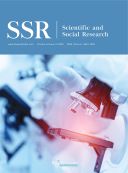Abstract
With the popularization of higher education, the quality of higher education has been the focus of society. With teaching in colleges and universities being continuously reformed, the means and methods of college teaching quality evaluation are also constantly improving, thus the traditional teaching quality evaluation method can no longer fully meet the actual needs of the current teaching quality evaluation in colleges and universities. As a scientific and systematic theory, the customer satisfaction theory has been gradually recognized by various industries, and has also been widely used in non-profit organizations. Colleges and universities under the non-profit service sector, and the focus is on whether their educational services can satisfy customers (especially students) based on the comparative analysis of customer satisfaction theory and customer satisfaction evaluation method, the model of teaching quality, and the index system and the corresponding measurement model [1]. On this basis, the teaching quality of Qingdao Hengxing University of Science and Technology was used as the research object, combined with the teaching service characteristics, and analysis of factors affecting customer satisfaction, which includes school reputation, perceived quality, perceived value, customer complaints, customer loyalty, students’ satisfaction. The results were analyzed and suggestions are given to effectively improve the teaching quality customer (student) satisfaction.
References
Cheng C-Y, 2004, Research on Teaching Quality Evaluation of Armed Police Technical Colleges and Universities, thesis, Northwestern Polytechnical University.
Chen J, 2008, Research on Customer Satisfaction Evaluation of Power Supply Enterprise Based on SEM, thesis, North China Electric Power University.
Green D, (ed) 1994, What is Quality in Higher Education?, The Society for Research into Higher Education, London, 3–21.
Fu H, Fu M, Zhang C, 2007, Application of Rough Set Theory in Evaluation and Analysis of Teaching Quality in Colleges and Universities. Computer Engineering and Applications, 43(36): 214–216.
Howard JA, Sheth JN, 1969, The Theory of Buyer Behavior, Wiley, New York.
Hung C-W, 2007, Research on Evaluation Model of Higher Vocational Education Based on Customer Satisfaction, Zhejiang University of Technology.
Bao H, 2007, Research on Teaching Quality Evaluation Model of Adult Higher Education Based on Customer Satisfaction. Journal of Wenzhou University (Natural Science Edition), 2007(3): 48–52.
Kristensen K, Martensen A, Gronholdt L, 2000, Measuring Customer Satisfaction: A Key Dimension of Business Performance. Business Performance Management, 2000(1): 157–170.
Liu B, 2000, Theory and Practice of Educational Evaluation, Zhejiang Education Press, Hangzhou, 2000
Liu G, Wang W, Wu D, 2009, Application of Decision Tree Algorithm Based on Fuzzy Clustering in Teaching Quality Evaluation. Journal of Northeast Normal University (Natural science edition), 2009(3): 36–39.
Oliver RL, Linda G, 1981, Effect of Satisfaction and its Antecedents on Consumer Preference and Intention. Advances in Consumer Research, 8(1): 88–93.
Pan X, 2005, Grey Fuzzy Comprehensive Evaluation and Validity Test of Teaching Quality in Colleges and Universities. Scientific and Technological Progress and Countermeasures, 2005(4): 149–150.
Peng Z, 2005, The Markov Chain Method in Teaching Quality Evaluation. Proceedings of the 12th Annual Academic Conference of China Field Statistics Research Society, 418–421.
Kotler P, 2003, Marketing Management-Analysis, Planning, Execution and Control (9th edition). Shanghai People’s Publishing House, Shanghai.
Shen Y, Chen Y, 2002, Guarantee the Teaching Quality of Colleges and Universities with Evaluation Methods. Journal of China University of Geosciences, 2002(4): 50–53.
Tyler RW,1994, Basic Principles of Curriculum and Instruction. People’s Education Press, Beijing.
Westbrook RA, Reilly MD, 1983, Value-Percept Disparity: An Alternative to the Disconfirmation of Expectation There of Consumer Satisfaction. Advances in Consumer Research, 10: 256–261.
Wang X, Huang F, 2007, Teaching Quality Evaluation Model Based on BP Neural Network and Its Application. Research on Higher Engineering Education, 2007(5): 78–81.
Wang X, Wang T, 2001, Application of Fuzzy Comprehensive Evaluation Method in Teaching Quality Evaluation. Journal of Armored Engineering College, 15(3): 59–63.
Wang Y, 1998, Basic Conception of Higher Education Evaluation System and System with Chinese Characteristics. Evaluation of Chinese Higher Education, 1998(1): 10.
